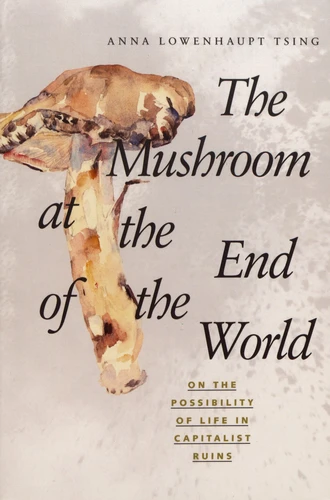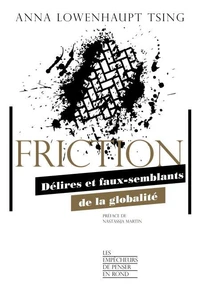
Mushroom at the End of the World. On the Possibility of Life in Capitalist Ruins
Par :Formats :
Définitivement indisponible
Cet article ne peut plus être commandé sur notre site (ouvrage épuisé ou plus commercialisé). Il se peut néanmoins que l'éditeur imprime une nouvelle édition de cet ouvrage à l'avenir. Nous vous invitons donc à revenir périodiquement sur notre site.
- Réservation en ligne avec paiement en magasin :
- Indisponible pour réserver et payer en magasin
- Nombre de pages331
- PrésentationBroché
- FormatGrand Format
- Poids0.684 kg
- Dimensions15,4 cm × 23,8 cm × 2,2 cm
- ISBN978-0-691-17832-5
- EAN9780691178325
- Date de parution01/10/2017
- ÉditeurPrinceton University Press
Résumé
Matsutake is the most valuable mushroom in the world—and a weed that grows in human-disturbed forests across the northern hemisphere. Anna Lowenhaupt Tsing's account of this sought-after fungi offers insights into areas far beyond just mushrooms and addresses a crucial question : what manages to live in the ruins we have made ? The Mushroom at the End of the World follows one of the strangest commodity chains of our times to explore unexpected corners of capitalism.
Here, we witness the varied and peculiar worlds of matsutake commerce : the worlds of Japanese gourmets, capitalist traders, Hmong jungle fighters, Finnish nature guides, and more. These companions also lead us into fungal ecologies and forest histories to better understand the promise of cohabitation in a time of massive human destruction. The Mushroom at the End of the World is an original examination of the relationship between capitalist destruction and collaborative survival within multispecies landscapes, the prerequisite for continuing life on earth.
Here, we witness the varied and peculiar worlds of matsutake commerce : the worlds of Japanese gourmets, capitalist traders, Hmong jungle fighters, Finnish nature guides, and more. These companions also lead us into fungal ecologies and forest histories to better understand the promise of cohabitation in a time of massive human destruction. The Mushroom at the End of the World is an original examination of the relationship between capitalist destruction and collaborative survival within multispecies landscapes, the prerequisite for continuing life on earth.
Matsutake is the most valuable mushroom in the world—and a weed that grows in human-disturbed forests across the northern hemisphere. Anna Lowenhaupt Tsing's account of this sought-after fungi offers insights into areas far beyond just mushrooms and addresses a crucial question : what manages to live in the ruins we have made ? The Mushroom at the End of the World follows one of the strangest commodity chains of our times to explore unexpected corners of capitalism.
Here, we witness the varied and peculiar worlds of matsutake commerce : the worlds of Japanese gourmets, capitalist traders, Hmong jungle fighters, Finnish nature guides, and more. These companions also lead us into fungal ecologies and forest histories to better understand the promise of cohabitation in a time of massive human destruction. The Mushroom at the End of the World is an original examination of the relationship between capitalist destruction and collaborative survival within multispecies landscapes, the prerequisite for continuing life on earth.
Here, we witness the varied and peculiar worlds of matsutake commerce : the worlds of Japanese gourmets, capitalist traders, Hmong jungle fighters, Finnish nature guides, and more. These companions also lead us into fungal ecologies and forest histories to better understand the promise of cohabitation in a time of massive human destruction. The Mushroom at the End of the World is an original examination of the relationship between capitalist destruction and collaborative survival within multispecies landscapes, the prerequisite for continuing life on earth.









